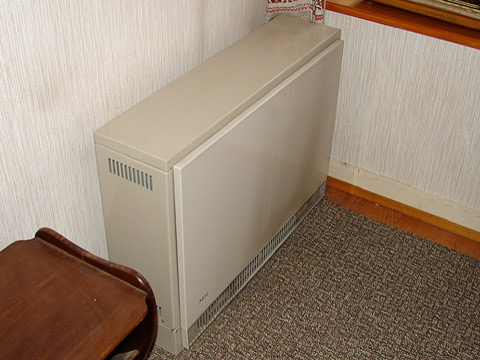Summary
The object identified is an older model electric storage heater. Based on its age and function, there is a high probability that internal insulation materials contain asbestos. It is strongly recommended to assume the heater is asbestos-containing and consult a professional for testing and removal before any disturbance.
Object description
The image displays a free-standing, older model electric storage heater, branded AEG. It is a rectangular, beige-colored unit positioned in the corner of a room on a carpeted floor. The heater features ventilation grilles at the bottom front and on the side near the top.
Object location
Coordinates:
47°4'34.24"N, 15°27'5.28"E
City/Country: Graz, Österreich
Full Address: Karl-Franzens-Universität Graz, Heinrichstraße, Univiertel, Geidorf, Graz, Steiermark, 8010, Österreich
Asbestos Assessment
This type of electric storage heater, particularly models manufactured before the widespread ban on asbestos, is considered a high-risk item. The primary function of these heaters is to store heat generated during off-peak hours and release it slowly. This requires high-performance thermal insulation to be both effective and safe, and asbestos was a common material for this purpose in products such as lightweight insulation boards, gaskets, and technical textiles. The internal core of the heater is highly likely to contain asbestos insulation boards, which can be friable and release fibers easily if disturbed. Additionally, asbestos may be present in gaskets, seals, and electrical insulation components within the unit. While the external metal casing is not suspect, any disturbance, repair, or dismantling of the unit could release dangerous asbestos fibers from these concealed internal materials.
Recommended action
This heater must be treated as asbestos-containing material until proven otherwise through laboratory analysis. Do not attempt to open, dismantle, service, or remove the unit yourself. It is strongly recommended to consult a licensed asbestos abatement professional to safely manage, test, and if necessary, remove and dispose of the heater according to regulations.
Attachments
Share report
Direct Link: https://my.asbestos.help/r/0c0171a6-83d4-4035-972a-eecbfdc049e5

